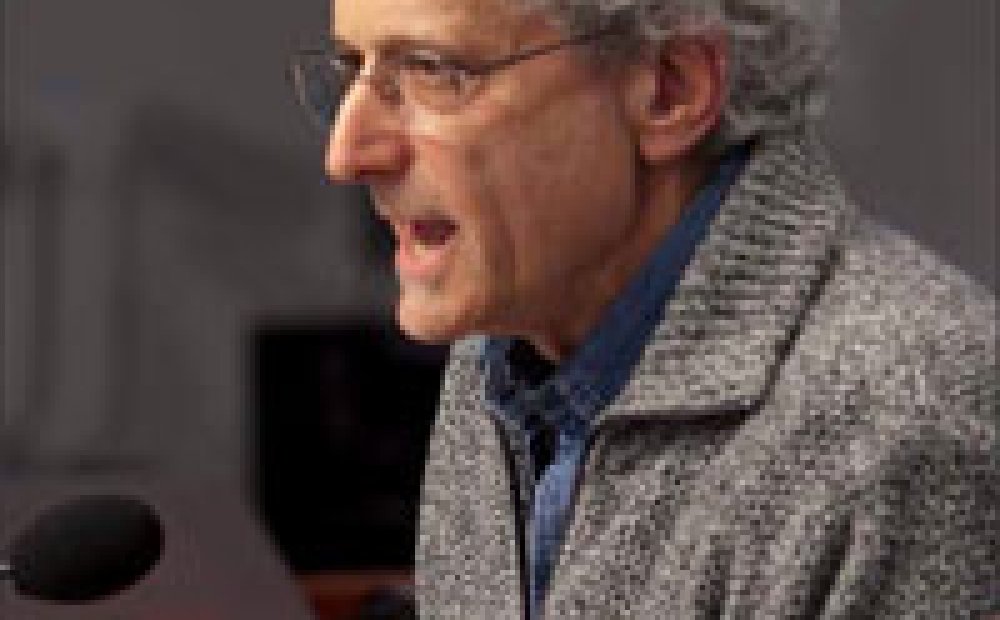Book Talk: <i>44 Days: Iran and the Remaking of the World</i>

On January 29, 2010, the Middle East Program of the Woodrow Wilson International Center for Scholars hosted a meeting featuring renowned photojournalist David Burnett. The event was moderated by Robert Litwak, Vice President for Programs and Director of International Security Studies at the Wilson Center.
Burnett, a photographer with over forty years of experience, reflected on his collection of photographs taken over the 44 days he spent in Iran during the tumultuous winter of 1978-1979, culminating in the Islamic Revolution. These historic images of an Iran experiencing change have been compiled in his new book, 44 Days: Iran and the Remaking of the World. Along with a slide show presentation of many of these works was Burnett's unique narrative of Iran's momentous 1979 revolution, a revolution which not only changed Iran but altered the dynamics of the Middle East and Iran-U.S. relations.
Burnett began by pointing out the major technological developments that have transpired since his time in Iran. Citing the various forms of media that have emerged alongside the advent of the Internet – blogging, Twitter, phone-cameras, and YouTube – Burnett said that journalism has undergone tremendous change, especially in the last 10 years. "But the still photograph," he maintained, "is still a powerful tool of communication."
Comparing and contrasting the demonstrations of 1979 to those following the June 2009 presidential elections, Burnett discerned an uncanny similarity between the images he captured in 1979 and those he saw in the media of this past summer's demonstrations. For one, "most of the drama played out on the streets," he said. Despite the difference in clothing styles and cars, they shared the "same energy." A second similarity, observed Burnett, was the sheer size of the demonstrations, which often amassed close to a million people. Thirdly, he noted that for both opposition movements, everything became a political event as "things did not happen in a vacuum," he said. Even at funerals and mourning ceremonies, highly emotional and political speeches were made and rallies were organized. Another similarity is that, for most onlookers, the end-result of both movements was unforeseeable. "As journalists, [we were] joining a race that didn't necessarily have a finish line," he said. Finally, he observed that Tehran University, then and now, remains a "hotbed of Iranian politics," as has university life in general in Iran.
One key difference he detected between 1979 and 2009 was in the attitudes toward the media, especially regarding foreign journalists. According to Burnett, whereas the present regime has been much more restrictive toward the press, Khomeini welcomed foreign journalists as "friends" and made clear that they were not to be harassed. His several intimate photographs of the late Ayatollah Khomeini affirm this point. Burnett indicated the first sign of the impending tumult was evident upon his arrival at Tehran airport in late 1978, where there was no one to stamp the passports of incoming travelers. Within an hour of landing, he was informed by Tehran's Chief Bureau that there was a shooting in Tehran's 24 Esfand Square, which became the first of many street demonstrations he would witness through his camera lens during his 44 days in Iran.
According to Burnett, nationality, ethnicity, religion, and race typically come secondary to one's identity as a journalist. He admitted, however, that he became more aware of his 'American-ness' amidst millions of Iranians chanting "Death to America!" Burnett closed by noting the irony in how many of those who demonstrated in 1979 are now trying to quell the current protests.
Drafted by Nader Mehran on behalf of the Middle East Program
Hosted By

Middle East Program
The Wilson Center’s Middle East Program serves as a crucial resource for the policymaking community and beyond, providing analyses and research that helps inform US foreign policymaking, stimulates public debate, and expands knowledge about issues in the wider Middle East and North Africa (MENA) region. Read more
